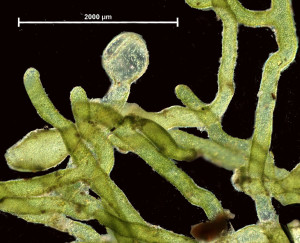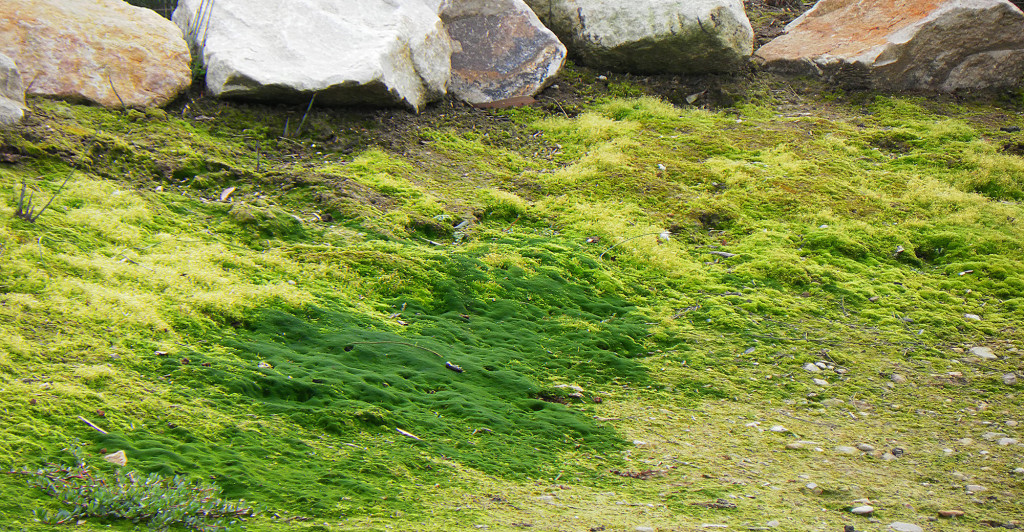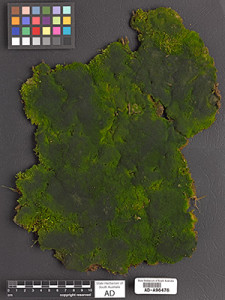State Herbarium staff member Carolyn Ricci and Hon. Research Associate Bob Baldock from the Algae Unit report on algae found in the new Botanic Gardens stormwater recycling ponds: this time on a species of Vaucheria…
A dark green, velvety patch about 1.5 m across has appeared on the banks of the northernmost wetland storage pond. It stands out in texture and colour from the extensive band of grass-green mosses now growing there. Under the microscope, snake-like, twisted threads full of disc-shaped chloroplasts reveal it is a remarkable alga — Vaucheria frigida — and not a moss. This is the first time that this species has been recorded for the Southern Lofty (SL) region.
Vaucheria belongs to the yellow-green algae group, the Xanthophyceae. This is not a green alga or common “pond slime”. Its microscopic threads are generally not partitioned into separate cells. With no cross walls, the whole mass we see at the pond could theoretically be a single plant originating from a single spore.
This group of alga stores oil rather than starch and reproduction is even more remarkable. Male and female structures share the same stalk in this species: the female (oogonium) is a thick-walled globe of chloroplasts and oil droplets, the male (antheridium) a twisted or coiled little cylinder developing numerous sperms each with two whiplashes, enabling them to swim, then gain entrance through an opening in a small beak of the female structure. Vaucheria can spread also by releasing swollen blobs of cell contents that have a surface of numerous paired whiplashes, propelling the blob (zoospore) through water.

Twisted threads without cross walls
This algae can inhabit fresh or slightly saline water, or live on moist soil, as has happened in the Botanic Gardens pond population. Five species of Vaucheria associated with marine situations (but not this one) are recorded in the late Prof. Womersley’s Marine benthic flora of south-eastern Australia.
We hope you agree that the blooming of the small and unusual in and around the ponds deserves a closer look—perhaps a student might one day take up the challenge?



